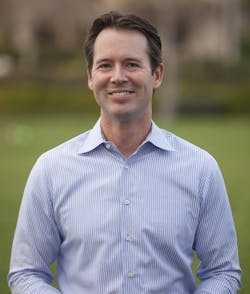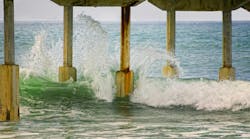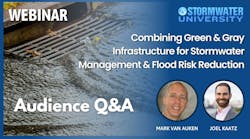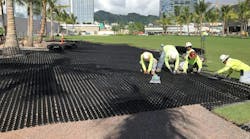As the 2016 elections come into focus and a new Congress prepares to take on infrastructure debates, it becomes more urgent than ever to discuss our national priorities and formulate a plan. What facets of our infrastructure should the incoming administration focus on? What critical needs demand attention at the federal, state, and local levels?
As many of you know, Infrastructure Week (May 16–May 23) is a national campaign that aims to elevate infrastructure as a critical issue in America. More than 100 affiliate organizations from all sectors of the nation’s economy and civil society have come together to create discussion, discover solutions, and promote infrastructural renewal. Forester Media, the publisher of Water Efficiency, is an Infrastructure Week affiliate. We’ve been proud to help lead the conversation.
To initiate the discussion, we recently reached out to industry experts with four questions regarding the state of our infrastructure. Here San Diego City Councilman Mark Kersey offers his perspective.
Councilmember Mark Kersey believes that maintaining and improving the City’s roads, sidewalks, parks, and fire stations is an essential responsibility of the City Council. As Chair of the Council’s Committee on Infrastructure, he is pursuing an ambitious work plan that is reforming the way San Diego evaluates, prioritizes, and invests in infrastructure.
Water Efficiency (WE): Which infrastructure projects should be given priority? Roads and bridges? Dams and levees? Water supply? Electrical grid?
Mark Kersey (MK): Infrastructure in general should be given priority. In the City of San Diego, however, our constituents are predominately concerned with the quality of our streets, sidewalks, parks, and public safety facilities. We should be increasing our commitment to all of these project types and focus on prioritizing investment in maintaining and repairing our assets before they fall apart and have to be replaced at a much higher cost.
WE: Is there a solution to long-term infrastructure funding?
MK: First, you cannot “solve” infrastructure. Infrastructure is a core function of local government, like police and fire safety. Dedicating enough resources to maintain our infrastructure at an acceptable standard of service, and not deferring our maintenance costs, extends the life of our assets and saves taxpayers dollars. My ballot measure, Rebuild San Diego, dedicates funding to infrastructure projects over 25 years and ensures future leaders cannot divert funds away from infrastructure investment.
WE: What kind of harm is the current state of our infrastructure doing to the economy and the community?
MK: A lack of quality infrastructure impacts every part of San Diego. Broken and busted sidewalks are dangerous for our children and seniors and hurt small businesses that rely on foot traffic. Pothole-filled streets can create unsafe driving and bicycling conditions. Poor transportation infrastructure increases commute times and negatively impacts our environment. Old and out-of-date cyber infrastructure will turn away prospective entrepreneurs and businesses. The state of our infrastructure and the state of our City are interdependent. Conversely, every dollar spent on infrastructure improvements adds almost $2 to the local economy.
WE: What can various government entities—from local to federal—do to attract private sector support and investment?
MK: Show that our government is already committed to making infrastructure a priority by increasing capacity to handle additional projects, streamlining the bureaucracy, setting attainable service level standards, and dedicating funds every year for regular maintenance and repair.
WE: Thank you, Mark.






